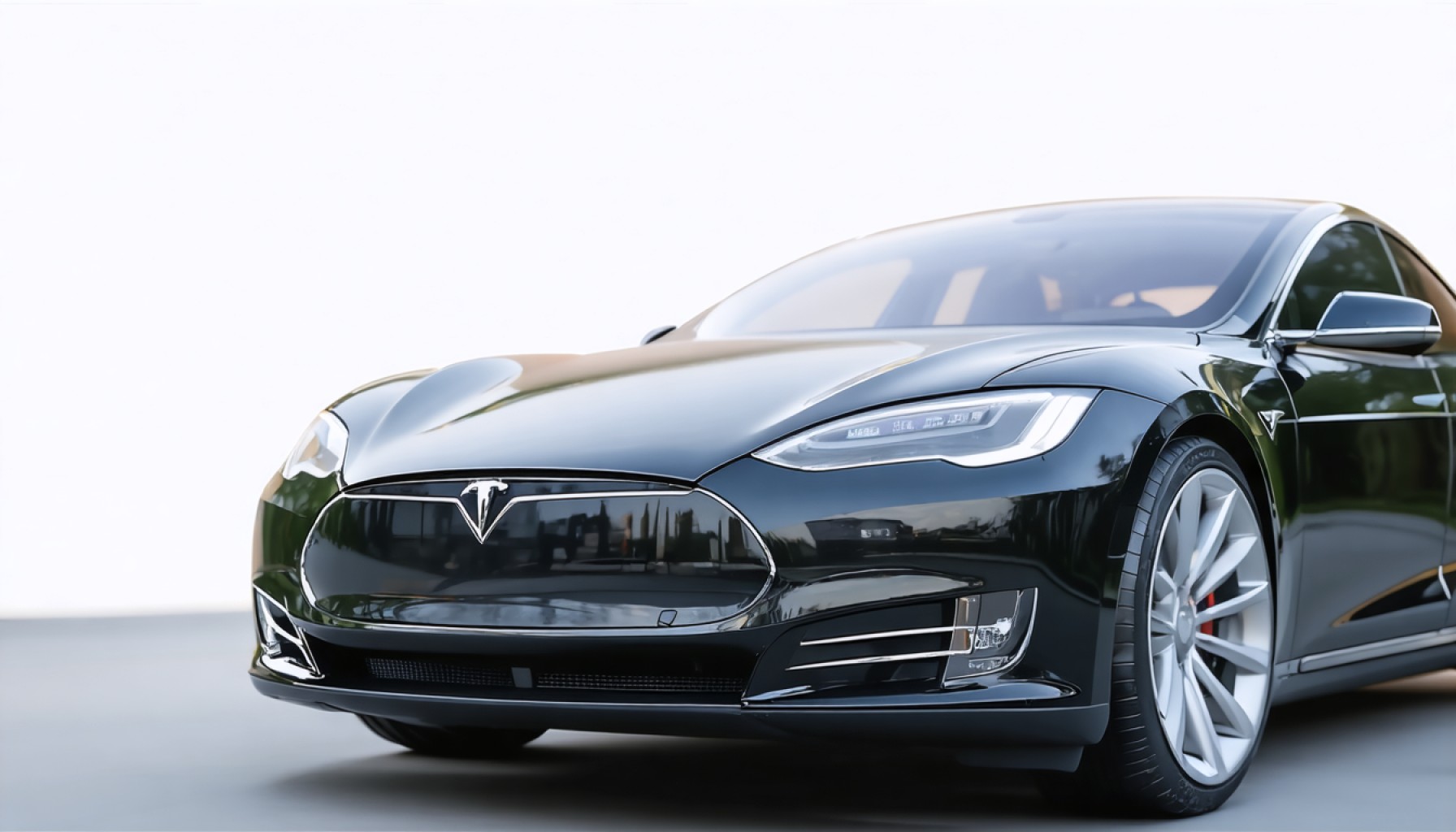- Tesla faces significant challenges due to trade wars and tariffs impacting investor confidence.
- The company suffers from declining vehicle sales, with notable drops of 45% in the EU and 11.5% in China.
- CEO Elon Musk’s controversial political statements contribute to “unprecedented brand damage.”
- Despite diverse ventures, Tesla remains primarily a car manufacturer, with cars accounting for the majority of its revenues.
- Tesla’s stock is under scrutiny due to its high valuation, trading at 130 times earnings.
- Investors are considering whether Tesla’s visionary promises outweigh its current operational realities and risks.
Amidst a market landscape shaken by trade wars and sudden tariff shifts, Tesla has found itself ensnared in an unforeseen conundrum. As the dust settles from President Trump’s recent tariff maneuvers—which initially spooked investors—an emerging optimism offers a glint of hope. But below the surface, Tesla’s journey tells a tale far more complex and daunting.
Tesla, the celebrated electric vehicle giant renowned for its audacious leap into autonomous driving and energy storage, is now grappling with a paradox: while the booming EV market accelerates ahead, its own vehicle sales have slipped into reverse gear. A stark 45% drop in the EU market coupled with an 11.5% dip in China spells a sobering reality for the company. Even as competitors surge, Tesla faces what insiders call “unprecedented brand damage,” a fallout partly traced back to CEO Elon Musk’s increasingly contentious political engagements.
Although Musk’s vision extends into a future teeming with robotaxis and personal robots, Tesla remains, at its core, a car manufacturer. Last year alone, cars accounted for over $77.1 billion of its $97.7 billion in sales. Yet, whispers of decline grow louder. Tesla’s early-year delivery reports show a mere 336,681 vehicles sold, reflecting its lowest quarter since 2022—a far cry from the once thriving growth trajectory.
Underpinning these issues is a deeper financial quandary. Tesla’s valuation has become a point of contention, with the company trading at an astronomical 130 times earnings—a figure that defies the norms even within the unpredictable tech sphere. Compared to legacy competitors like Ford and GM, Tesla’s price-to-earnings ratio looms disproportionately high, putting it under scrutiny for those questioning the sustainability of its stock price.
The core message against this backdrop is clear: Tesla might tantalize with the allure of innovation, yet at present, its feet are firmly entrenched in the realities of automobile production. Investors are buying into visionary promises, not tangible results—a gamble on a future still shrouded in uncertainty. As competition heats up and market dynamics shift, the onus is on Tesla to demonstrate it can fulfill its bold promises and stand the test of time.
Whether Tesla can pivot and reclaim its status as an unrivaled market leader or become a cautionary tale of overvaluation remains to be seen. For investors, this presents a crucial moment of reflection: Is the promise of tomorrow worth the price of today?
Is Tesla’s Market Struggle a Sign of an Impending Shift in the Automotive Industry?
The Complex Landscape of Tesla’s Market Position
Amidst evolving trade policies and shifting market dynamics, Tesla faces significant hurdles. As President Trump’s tariff policies sent ripples through the market, Tesla’s sales have experienced notable declines in key regions. Let’s dive deeper into the factors influencing this trend and explore how Tesla can navigate these challenges.
Key Market Insights and Predictions
– Economic Pressures from Tariffs: With the introduction of new tariffs, especially affecting US-China trade, Tesla has faced increased production costs. These financial pressures have cascaded down to affect vehicle pricing, which may partly explain the drop in sales in China.
– Industry Trends: The global EV market continues to grow, but competition is becoming fiercer. Other automakers, such as Volkswagen and NIO, are increasing their footprint with competitive pricing and robust technology advancements in EVs.
– Tesla’s Valuation Concerns: With Tesla’s price-to-earnings ratio at 130x, significantly higher than industry norms, analysts are cautious about the sustainability of such a high valuation. For comparison, legacy automakers like Ford and General Motors have much lower multiples, suggesting Tesla’s market dynamics are driven by expectations of future growth rather than current performance.
Potential Solutions for Tesla’s Challenges
1. Reassessing Pricing Strategies: By streamlining production and sourcing strategies, Tesla could mitigate tariff impacts and stabilize or lower vehicle prices, enhancing affordability.
2. Diversification Beyond Automobiles: Elon Musk’s vision of robotaxis and energy solutions presents diversification potential. Tesla’s energy division, involving solar panels and storage batteries, can buffer against automotive market fluctuations and create new revenue streams.
3. Enhanced Customer Communication: Addressing consumer concerns through transparent communication and brand reinforcement efforts could counteract “brand damage” and regain trust, especially with perception issues arising from Elon Musk’s political engagements.
Real-World Strategies for Investors
– Risk Assessment: Potential investors should weigh the risks associated with Tesla’s current market volatility against the long-term promises of innovation and market leadership.
– Portfolio Diversification: Investors wary of current valuations may consider diversifying their portfolios with a mixture of traditional and EV-focused automotive stocks to balance risks and opportunities.
Actionable Recommendations
– Stay Informed: Investors should keep abreast of policy changes and global market trends which could impact Tesla’s costs and market share.
– Evaluate Innovation Milestones: Keep an eye on Tesla’s progress in autonomous vehicle technology and energy solutions, as tangible advances could positively affect stock valuations.
Quick Tips for Tesla Enthusiasts
– Follow Market Leaders: Keeping track of competitors’ moves can offer insights into industry innovation trends and guide investment decisions.
– Engage with Tesla Ownership Clubs: Participation in Tesla forums and clubs can provide first-hand experiences and insights into Tesla’s customer satisfaction and brand perception.
For more information about Tesla’s innovation and vision, consider visiting the Tesla website.
